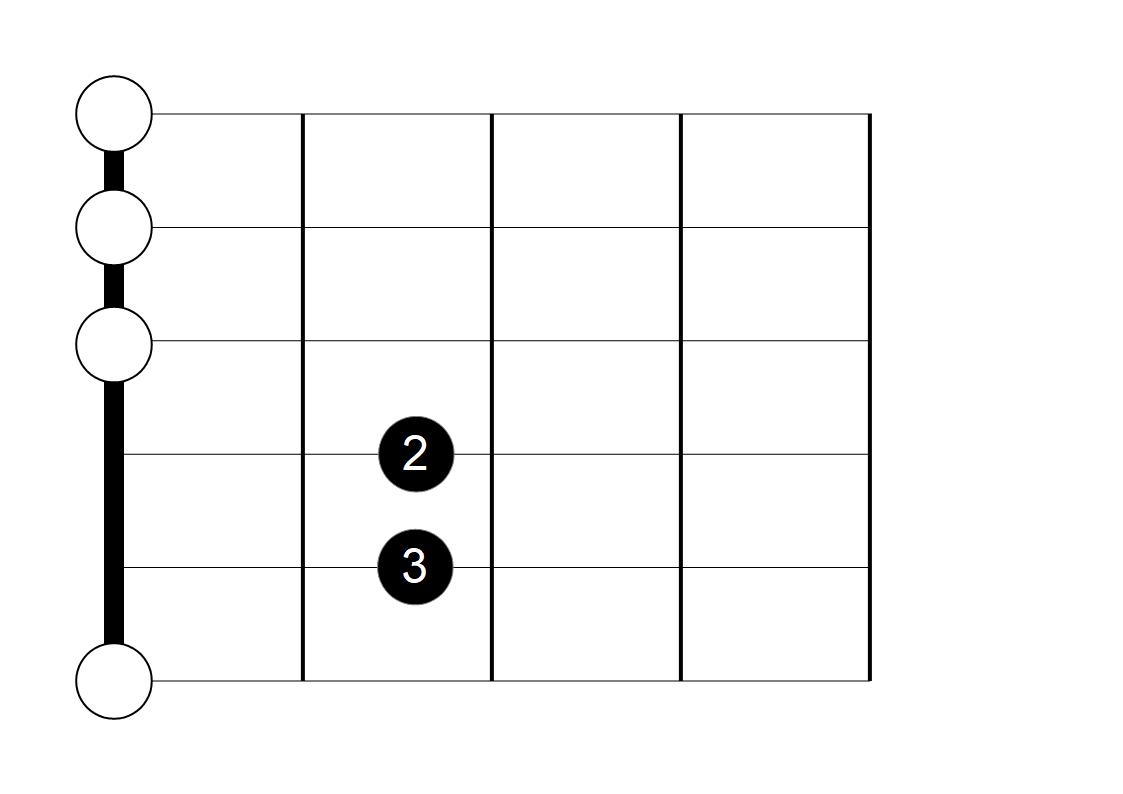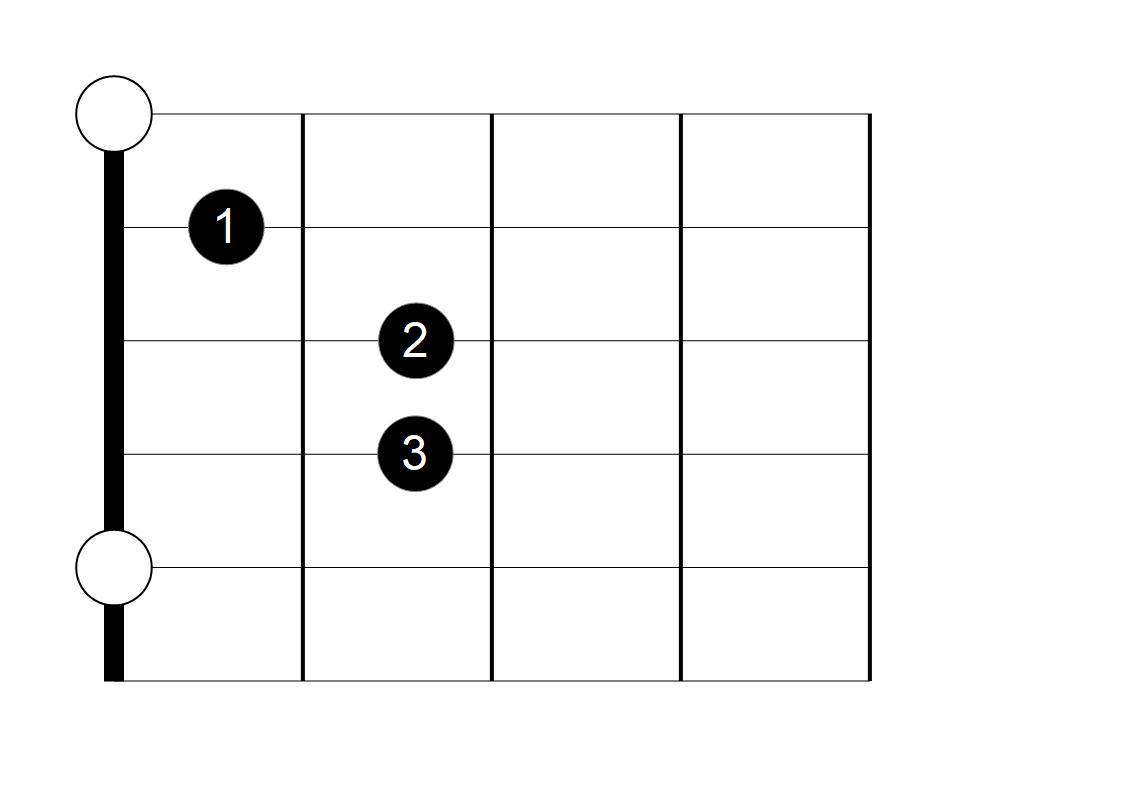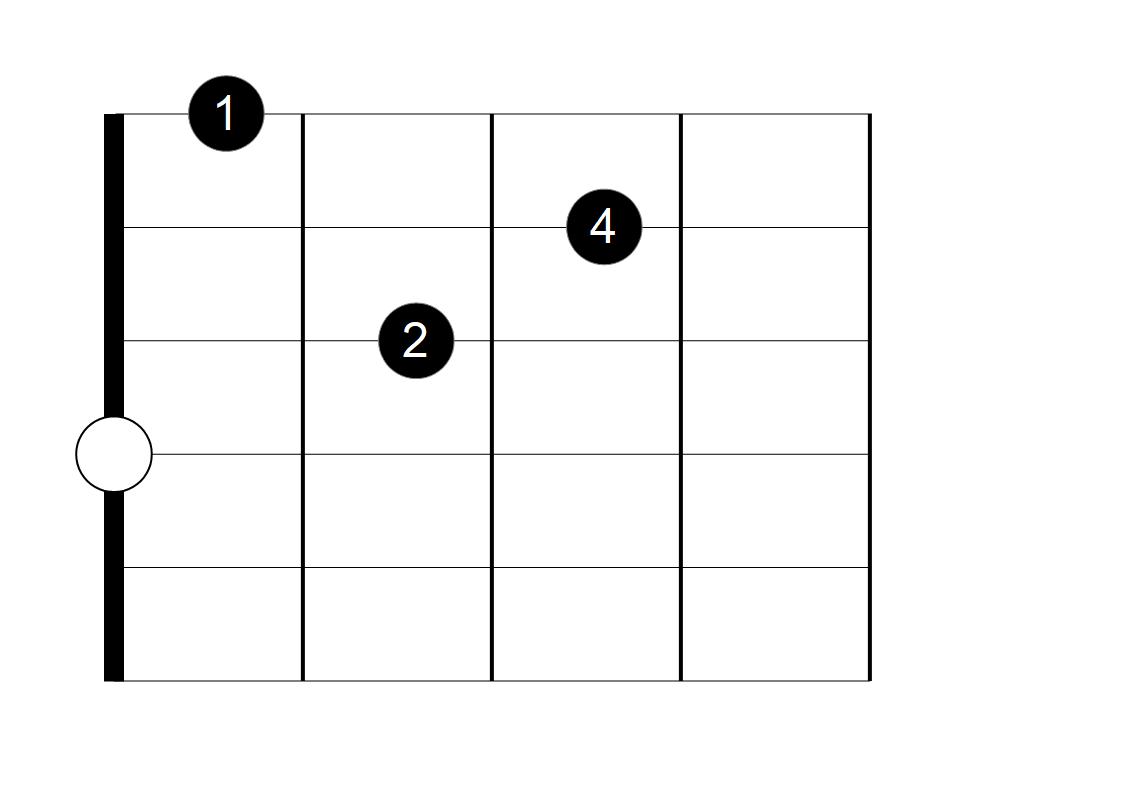Seventh Chords in The First Position
The well-known chords for song accompaniment on the guitar form an excellent basis for learning the typical Bossa Nova seventh chords. You will encounter these chords again and again – by using the barré technique also in the higher positions of the fretboard.
If you are unsure whether you have mastered the eight basic chords of guitar playing, you should first familiarize yourself with a basic fingering chart and some basic songs.
For intermediate players, a refresher on the barré skills in preparation for the typical bossa nova chords can be useful at this point. If you want to skip this introduction and get to know some more advanced chords be sure to check out the TOP10 Bossa Nova Chords!
The 8 Basic Chords








MAJor7, Minor7 & Friends -
What Are Seventh Chords?
In addition to the three basic chord tones (root note, third and fifth), four-note chords contain a fourth tone, the so-called seventh. You can see the difference between a triad and a seventh chord illustrated in the picture. Therefore, each seventh chord is identified by a 7 in the chord symbol. The important four note chords in Bossa Nova are:
- major triad with a major seventh (maj7)
- major triad with a minor seventh (7)
- minor triad with a minor seventh (m7)
- diminished triad with a minor seventh (m7b5)
- diminished triad with diminished seventh (dim7)


Beginner Bossa Nova Chords
For each of the eight open chords, at least two of the three basic types Maj7, (Dom)7 and m7 can be easily realized – exceptions prove the rule.
AMaj7, Am7 & a7
Beginning with the letter A and derived from the A major or A minor chord, all three basic four-note chords are easy to play. Be sure to learn!
Recommended Songs:
- Berimbau
- Besame Mucho
- Samba da Bencao



Bm7 & B7
These are actually not part of the “Basic8” but very useful to know and rather easy to play. If you are familiar with basic Folk & Blues Guitar you have surely come across the B7 chord already. Add the Bm7 to your repertoire too!
Recommended Songs:


CMaj7 & C7
Two very commonly used chords. The C7 chord shape is also movable across the fingerboard and you will find it in many song arrangements! The Cm7 chord is not included as it is usually implemented as a barré chord.
Recommended Songs:
- Samba de Orfeu
- Menina Moca
- Manha de Carnaval


DMaj7, Dm7 & D7
D7 and DMaj7 are relatively easy chords. The Dm7 chord, similar to the “little” F major chord, is often fingered as a partial barre and may require some practice.
Recommended Songs:
- Berimbau
- Estrada do Sol
- So Danco Samba



Em7 & E7
The EMaj7 chord only sounds good to a limited extent due to an unfortunate interval structure, while Em7 hardly differs from a pure E minor in this position. The E7 chord on the other hand is used frequently.
Recommended Songs:
- So Danco Samba
- Canto de Ossanha
- Samba da Bencao



FMaj7
Although not part of the basic open chords, this FMaj7 chord should still be in every guitarist’s repertoire. It is one of the few examples of a seventh chord in close position (as described above).
Recommended Songs:
- Samba da Rosa
- Vivo Sonhando
- Manha de Carnaval

G & G7
Because of the wide reach, the full G seventh chords are often a bit uncomfortable and not widely used. But it’s worth adding the G7 chord to your repertoire. In case you are not familiar with the simple G chord displayed here, you now have a very simple alternative to the commonly used G chord!
Recommended Songs:
- Aquarela do Brasil
- Samba de Orfeu
- E Preciso Perdoar


You don’t have to be able to play all of these chords fluently or even memorize them to learn a song. If you’re feeling ready and motivated, continue reading The First Song: Besame Mucho. Many of the chord fingerings I’ve chosen for this arrangement are deliberately simplified to make it easy to get started. Here is the accompanying video to give you an idea: